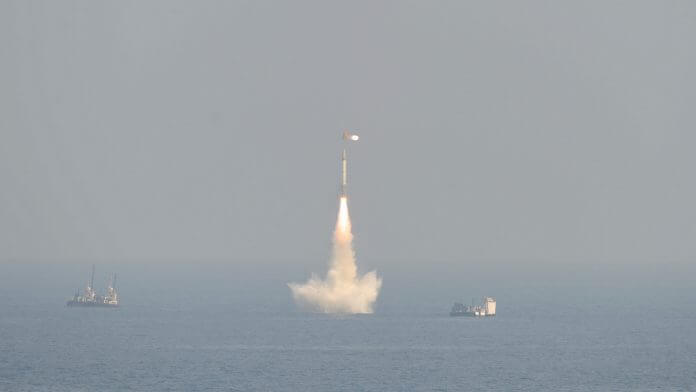In what is seen as a quantum leap for India's nuclear triad, the Defence Research and Development Organisation or DRDO successfully test-fired the K4 intermediate-range submarine-launched ballistic missile (SLBM) off Andhra Pradesh coast this week. After three failed attempts to launch the nuclear-capable missile from an underwater platform, the DRDO's announcement boosts India's second-strike capabilities and showcases its growing military prowess in the region.
Named after former President Dr. Abdul Kalam, the K-4 is one among the five series of Kalam missiles. It eventually aims to arm India’s first indigenously-Ship Submersible Ballistic Nuclear (SSBN), the INS Arihant class submarines. For now, the K-4 will arm India’s only in-service nuclear submarine, INS Arihant, which can carry four of these missiles. However, the upcoming nuclear submarines planned for induction in the future will have the capacity to carry eight. Until now, INS Arihant was equipped with K-15s with a 750-km range, significantly narrowing down the area Pakistan Navy would have to monitor to detect Indian SSBNs. And if some reports are to be believed, DRDO is already working on building a 5,000-km range K-5 missile to extend India's deterrence reach even further.
Reported to be 12 metres in length and weighing around 17 tonnes, the missile has the capability to carry a nuclear warhead of about 2 tonnes and is capable of penetrating precise targets from ground to air. Furthermore, it can move and monitor enemy aircraft or drones and target them immediately and, more importantly, possesses the capability to dodge incoming anti-missile articles.
With this successful attempt, India now joins the elite club of countries that have an operationalized nuclear triad, which includes Russia, the USA, China, the UK & France. Additionally, India can now target most of China, including Beijing, and all of Pakistan, from the northern parts of the Bay of Bengal.
Having a credible sea-based nuclear deterrent compared to a land-based system gives a country an edge during any conflict, especially a nuclear one. This is because the 'at-sea deterrence' options are more or less invulnerable when underwater and are not easily trackable or targetable.
Given the proximity of two of its main geopolitical adversaries, China & Pakistan, the reaction time for Indian land-based systems to respond to incoming nuclear weapons is very low. Hence, for New Delhi, which has officially adopted a 'no first use' nuclear doctrine with 'assured retaliation', continuous deployment of an at-sea nuclear deterrent is essential to ensure the survivability of its nuclear second-strike capability, which K-4 will now provide.
Image Source: The Print

